Would you tell us about Lamorisse, your latest project for Pedrali?
It is a chair, with or without armrests, with an aluminium frame, a material chosen for its lightness and resistance to weathering: this outdoor product can therefore be used on yachts or in seaside settings, like the bars and bistros found throughout the Mediterranean area. We have tried to make it as comfortable as possible: the seat is supported by elastic belting stretched on the frame, and all the cushions are water repellent thanks to a double cover, which enabled us to use rubber in a very comfortable way. The chair is easy to disassemble: the frames can be stacked and the cushions become flat for piling.
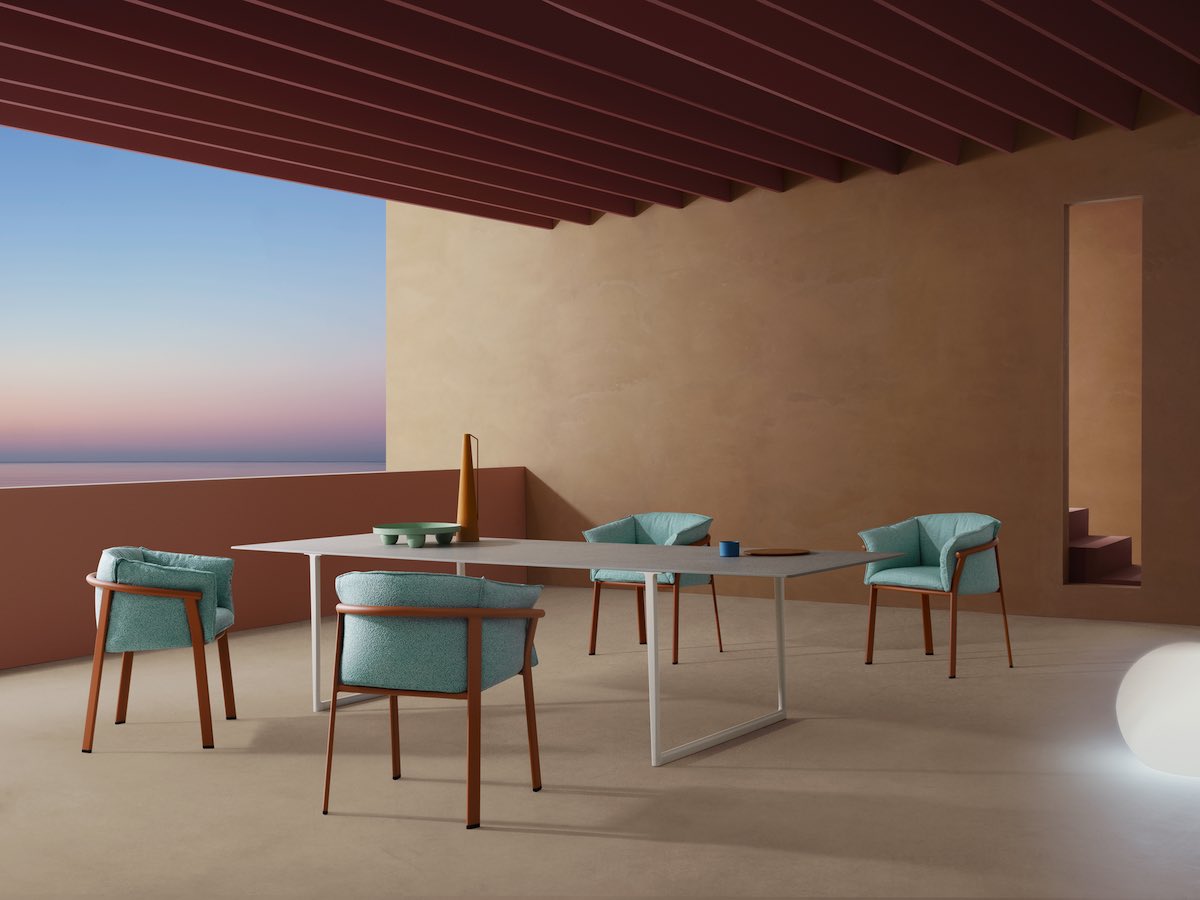
What guided the design process on an aesthetic level?
As often happens, we dig in our memoriy of Italian kids who spend the summer by the sea or in the country, and they remember the chairs – as in the case of our projects of past years – that were utilized by our grandmothers. Obviously with other technologies and other materials. Here there is the memory of an illustrious creation, the LC2 series by Le Corbusier, in which a tubular support structure contains and almost restrains the padding; an effect that also conveys a visual sense of comfort. The use of aluminium let us have larger tubes, which give a sense of matter, of solidity. It was a challenge for the company, because this is their first welded aluminium chair. But they responded with enthusiasm.
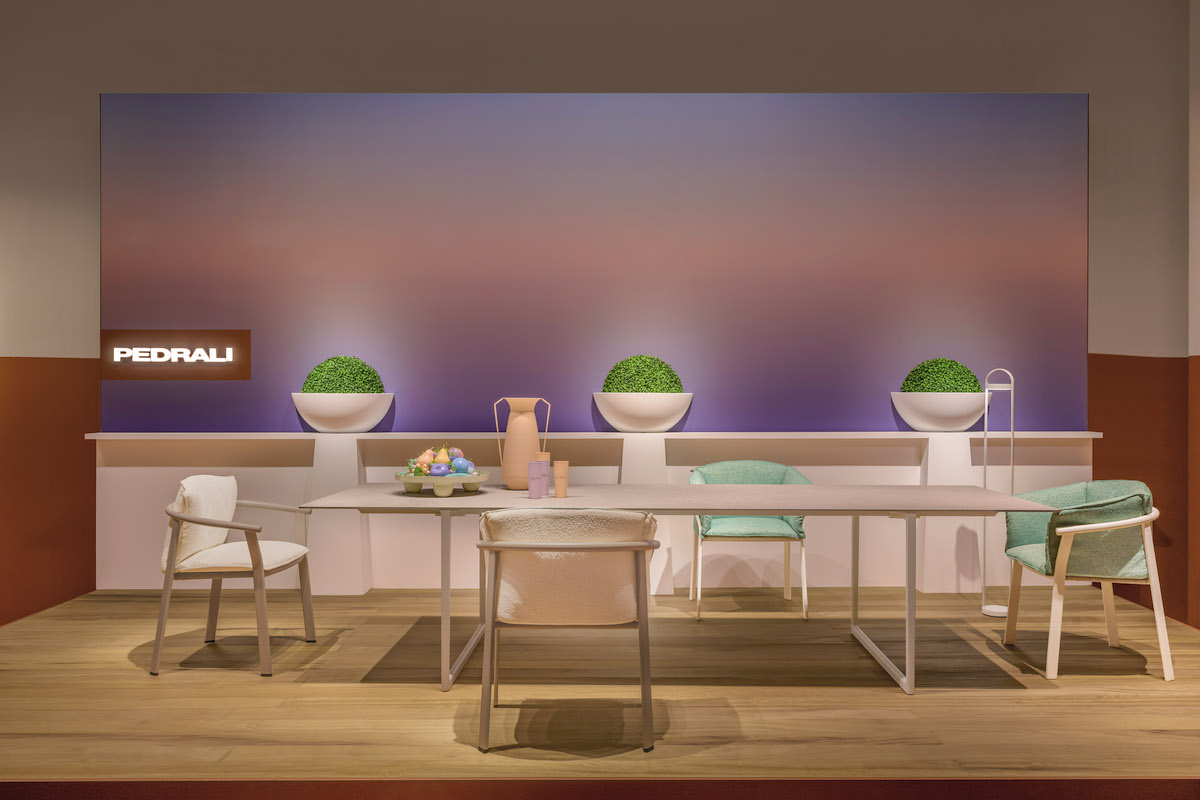
Did you pick the name?
Yes, as often happens. We chose this one thinking about the film Le ballon rouge by Albert Lamorisse, in which the characteristic image is that of a child with balloons, who seems to take flight. The idea was that this very light structure would be transported by the cushion, which thus has this ‘inflated’ look. That led to the parallel.

Will you be presenting other products for Pedrali this year?
There are two expansions of collections. A lounge settee in the Nolita family, which is one of their bestsellers, with its ample form. And then the stool of the Panarea collection, a natural evolution.
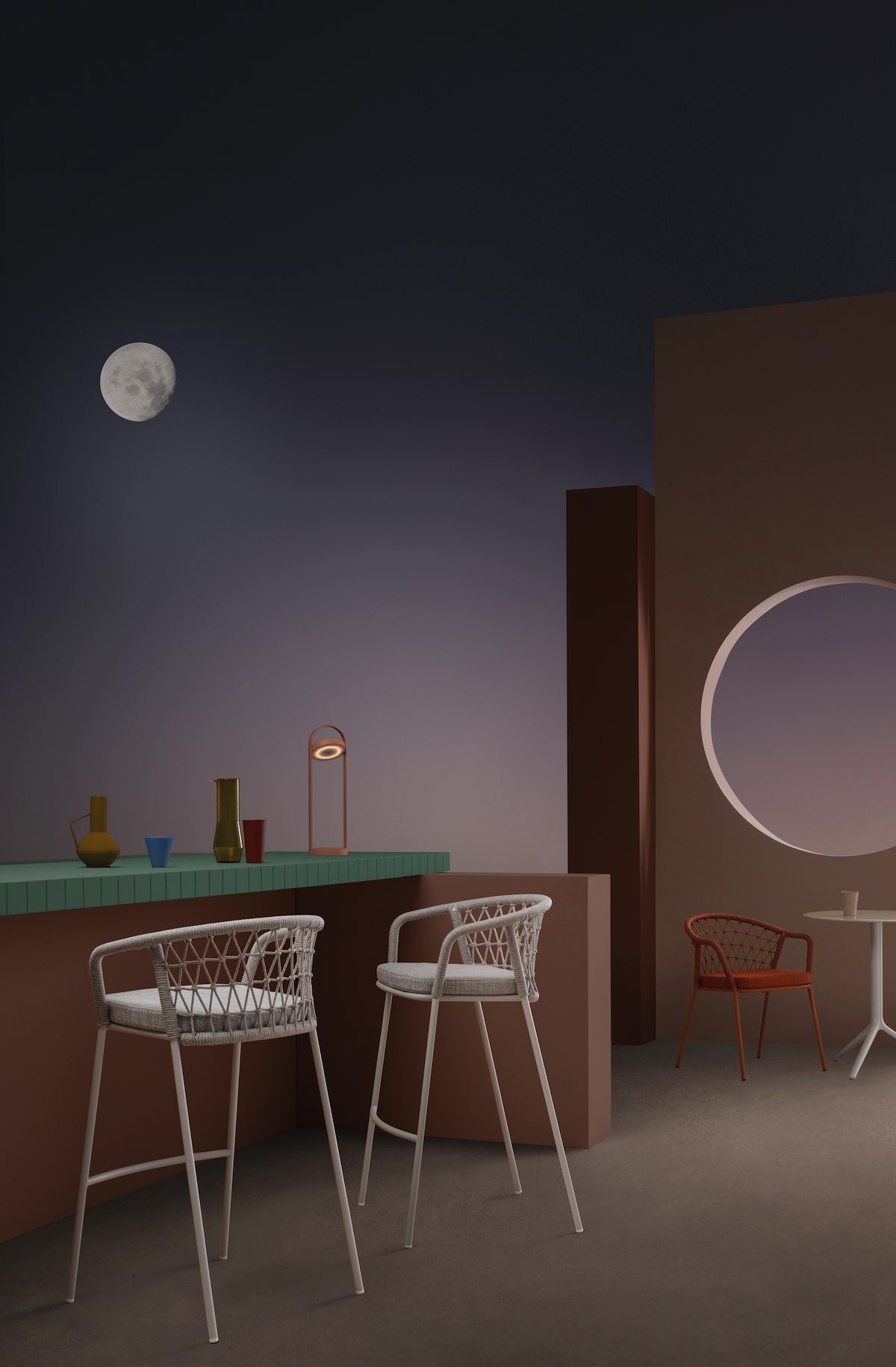
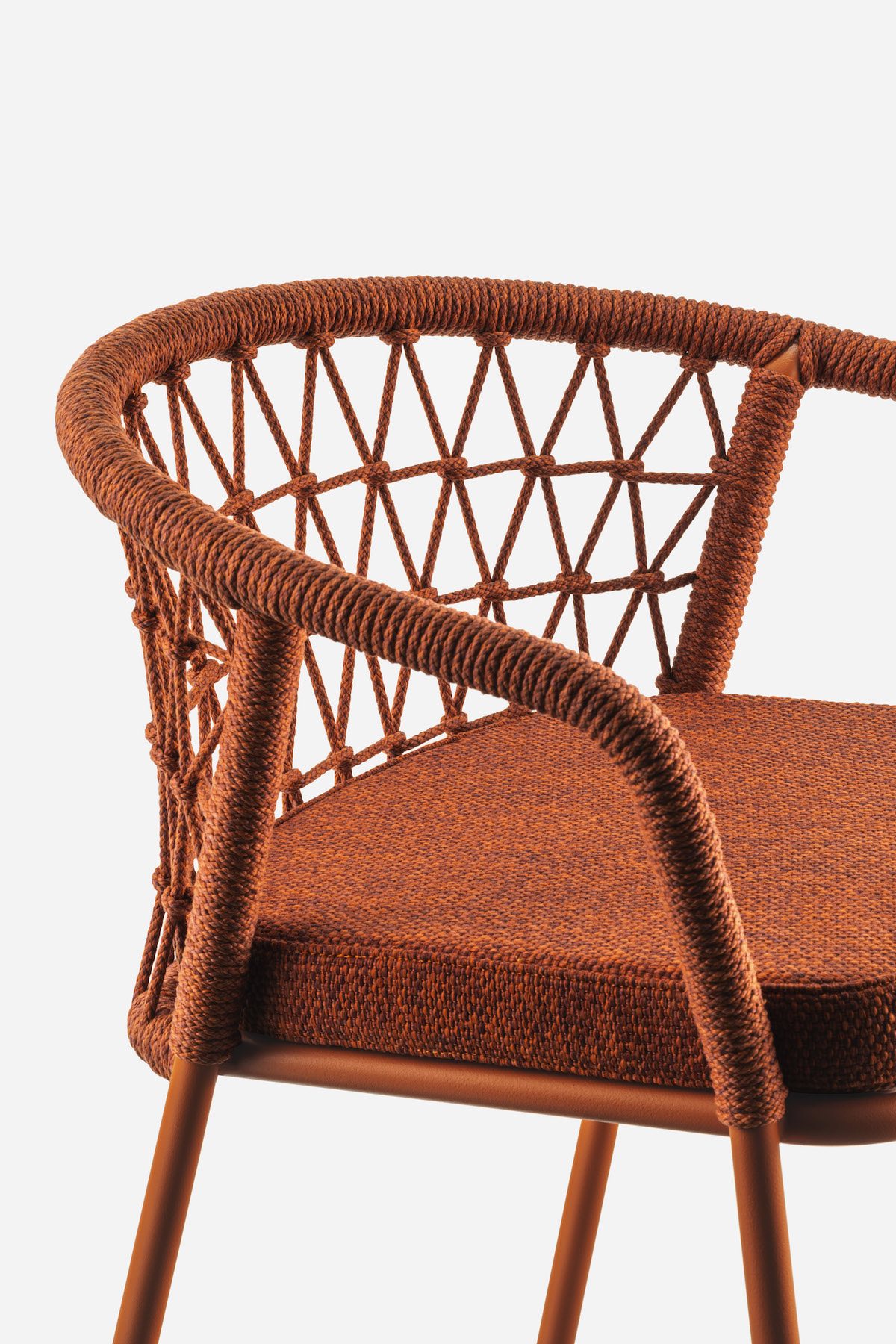
You were talking about workmanship… in Panarea there is a very crafted approach…
This too was a challenge: for a company so dedicated to industrial design, this kind of workmanship, which takes time in the production, was complicated to introduce. The project began by spending time in an artisan’s workshop, the same person with whom we have developed the Tribeca collection. With him we studied a weave that does not call for many hours of work, but still has an appealing aesthetic impact. We reduced it as much as possible: this triangle was denser at first, but then in dialogue with the company we reached the point of this transparent weave, which also adds character.
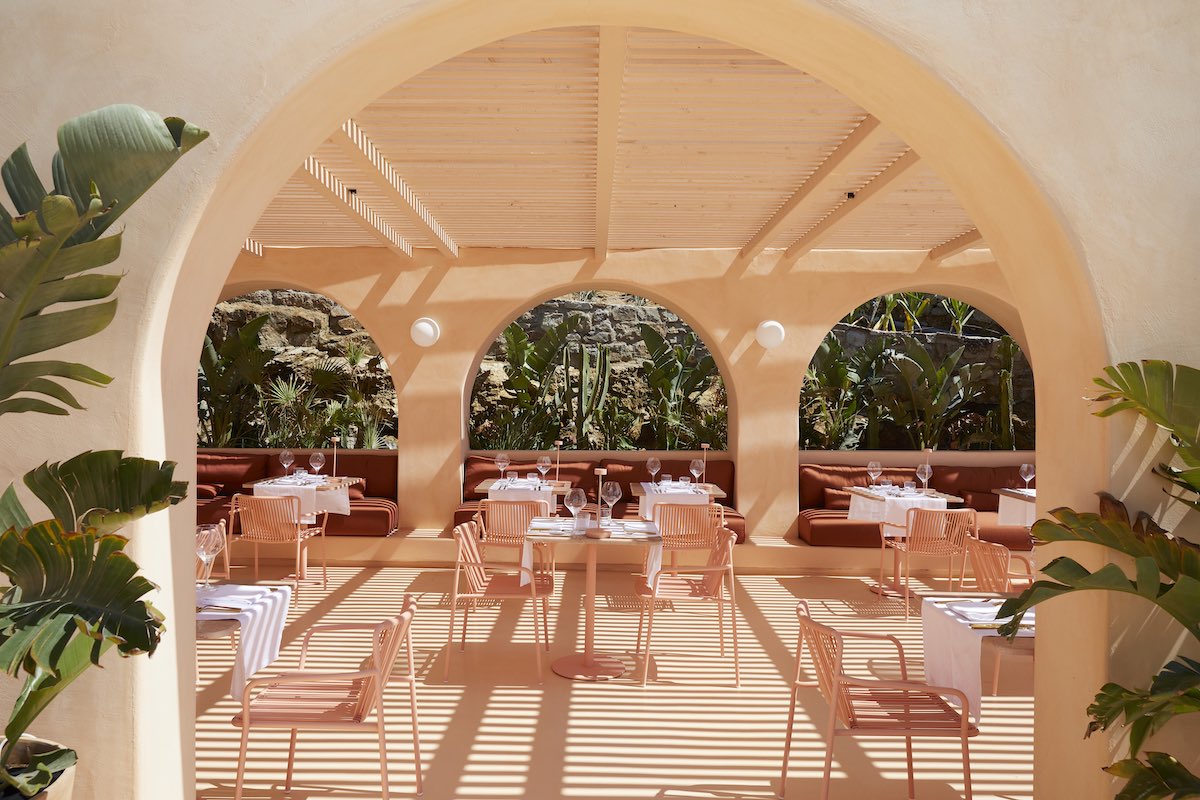
What is your relationship with “made by hand”?
We have always been strongly connected to crafts and craftsmen, there is a network of friendship with many of them. We spend a lot of time in their workshops, our research also involves doing, making, trying things out. The word ‘industrial’ makes you think of something made by machines. Actually, even something made by hand can be industrial, simply by repeating it in a more or less equal way. We do not only design a product, we also think about the process behind it. And this is why it is indispensable to talk with the people who make it. In industrial design the process is the protagonist.







